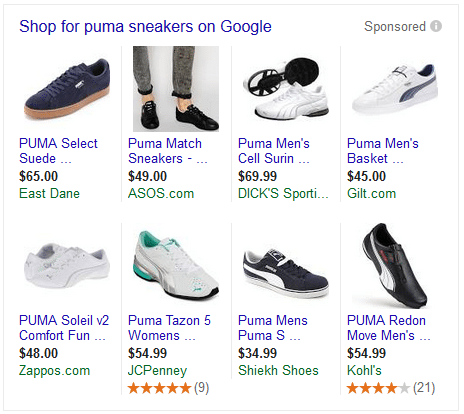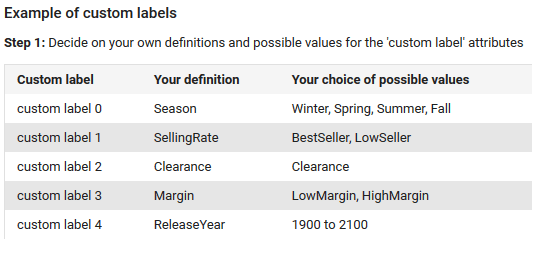Google Shopping is an effective way for online retailers to get their products in front of potential buyers. An online Google search returns organic results, some paid ads, and often times product ads also known as Product Listing Ads. These differ from the other search results as they display an optimized product image, product name, price, brand and often times user ratings.
Here is a recent search for “PUMA sneakers”:
 If your Google Shopping account is already live, you’ll want to ensure that you’re utilizing various features in the most effective way. If you haven’t already set up an account, you’ll first want to follow these steps to get started.
If your Google Shopping account is already live, you’ll want to ensure that you’re utilizing various features in the most effective way. If you haven’t already set up an account, you’ll first want to follow these steps to get started.
Taxonomies
Taxonomies within Google Shopping allow you to categorize your products so that Google can properly serve them based on the users search term. The taxonomies work in a similar fashion as a breadcrumb trail on your ecommerce site.
To mimic the PUMA listings above, you would want to categorize your products as:
“Apparel & Accessories > Shoes” and not simply “sneakers”.
Custom Labels
Custom Labels can be used to subdivide your products into custom values of your choosing. There are five custom label options listed from 0-4 that can be used. Google references some of these uses with this useful example which includes values for Seasons, SellingRate, Margins, etc. While these are great examples, you can even break out your custom labels to include things like categories allowing you to can group your products and set specific bids for them within new Ad Groups.
While these are great examples, you can even break out your custom labels to include things like categories allowing you to can group your products and set specific bids for them within new Ad Groups.
Product Groups
Product Groups as referenced above are a great way to subdivide your products for targeted bidding. In order to create a Product Group AND utilize Custom Labels, you’ll need to open up AdWords and locate your Google Shopping campaign.
If you’re running one campaign with all products listed, product groups can help you subdivide that campaign into different groups with different bids.
If you’re running one campaign with multiple ad groups, you can separate each ad group for a specific product group.
In order to accurately subdivide your products, each time you create a new product group, you’ll want to ensure that you exclude “Everything else in All Products” so that you can be sure that only the products within the chosen group are getting impressions and clicks and hopefully conversions!





